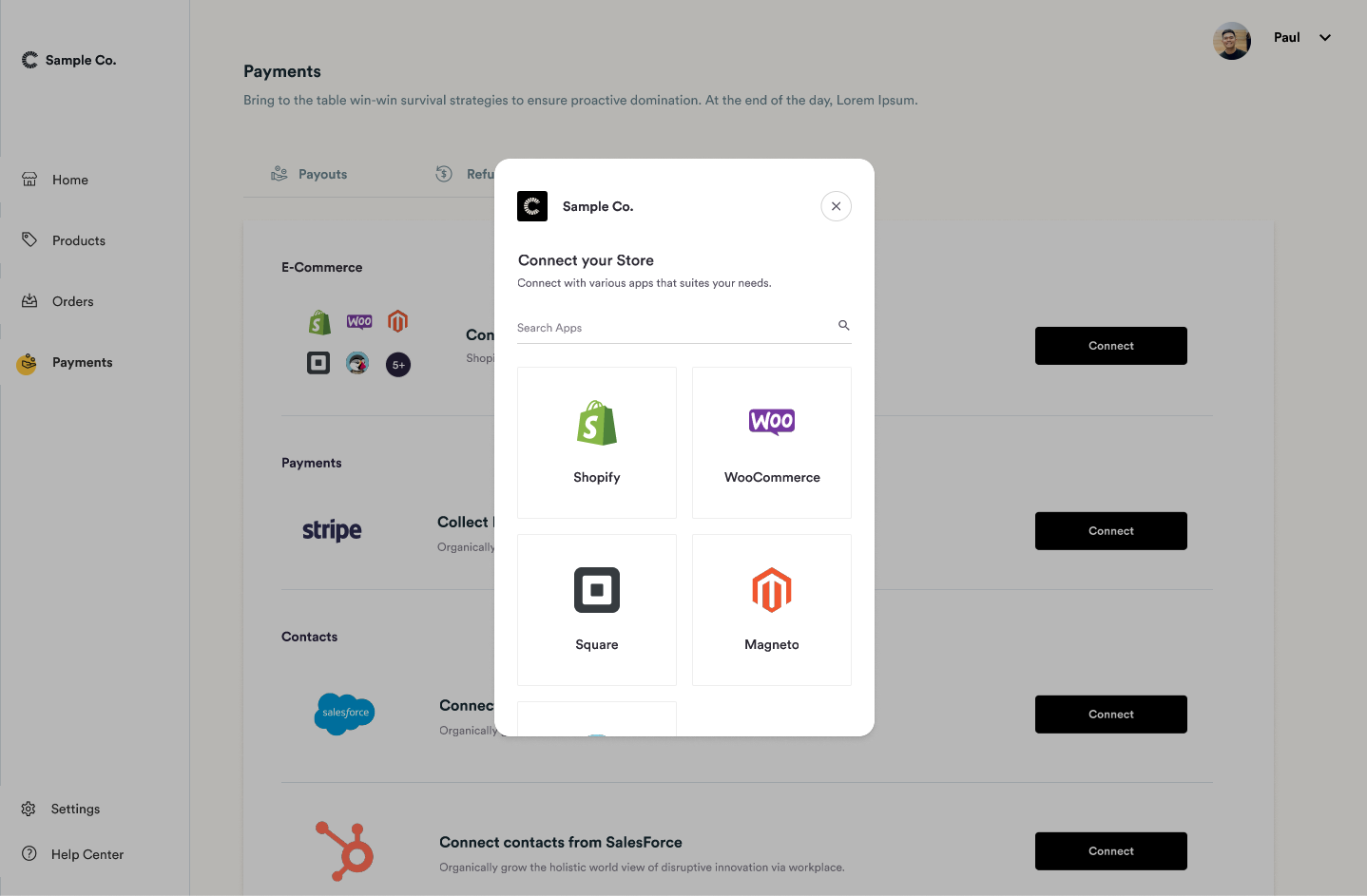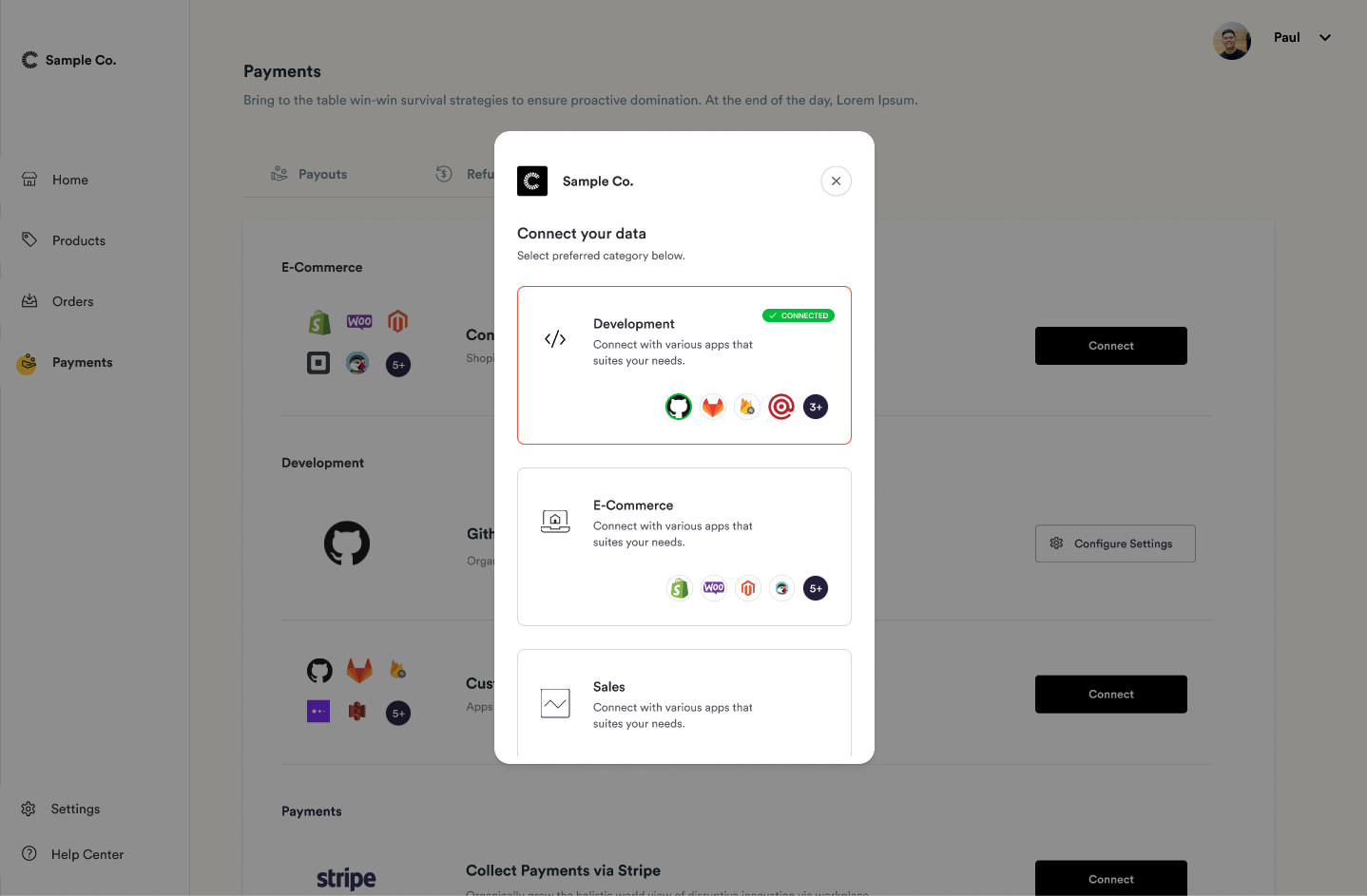What is a flow?
In hotglue, each “type” of integration you want to offer users is grouped into a flow. For example, you may want your users to import data from Development tools, like GitHub and GitLab, and E-Commerce shops, like Shopify and WooCommerce. When your users first open the hotglue widget they’ll see something like the following:
hotglue widget - flows

hotglue widget - E-Commerce flow
How do flows help me?
Flows serve two main purposes:- Flows let you define what types of integrations you want to support. For example, for a Development flow you may want to support importing data from GitHub or GitLab - but that doesn’t make much sense for an E-Commerce flow.
- Flows make it easy for your users to keep track of their data. Users can clearly see what kinds of data your application needs, and what platforms they can connect.

hotglue widget - Development flow connected
Flow types
There are three types of flows that you can enable in hotglue:V1 - One-way flows
Source flow
This is the simplest way to use hotglue, and the default flow type when you toggle off bidirectional flows. With a source flow, your customer connects thesource or tap, and you read data in from those linked sources into your own default target.